Getting to Peru was a long day!
But I used a bus company called Bolivia Hop/Peru Hop that took care of the details.
They have set routes but you can stay as many days as you want at each stop. Just log in and book your next bus.
First, they picked me up at my hotel in La Paz at 07:00.
It would be 4:30 (5:30 Peru time) in the afternoon before we crossed the Bolivia-Peru border.
First we drove to Lake Titicaca, the largest lake in South America (8400 sq km) and 3808 m above sea level. It’s the highest navigable l body of water in the world. The border goes through the middle.
We crossed the lake at a narrow channel. The bus went on the most rickety barge imaginable. We went in a small boat.



It was 11:00 before we reached Copacabana, Bolivia.
Overlooking the town.


Basilica of Our Lady of Copacabana (1669) houses the image of the Virgin de Copacabana.
It is beside a hill sacred to the Inca. It’s a small town but a religious destination.


Boat trip to Isla de Sol – “where the sun was born” according to Inca legend
One hour out, 1.5 hours to walk (or eat), then 1 hour back.


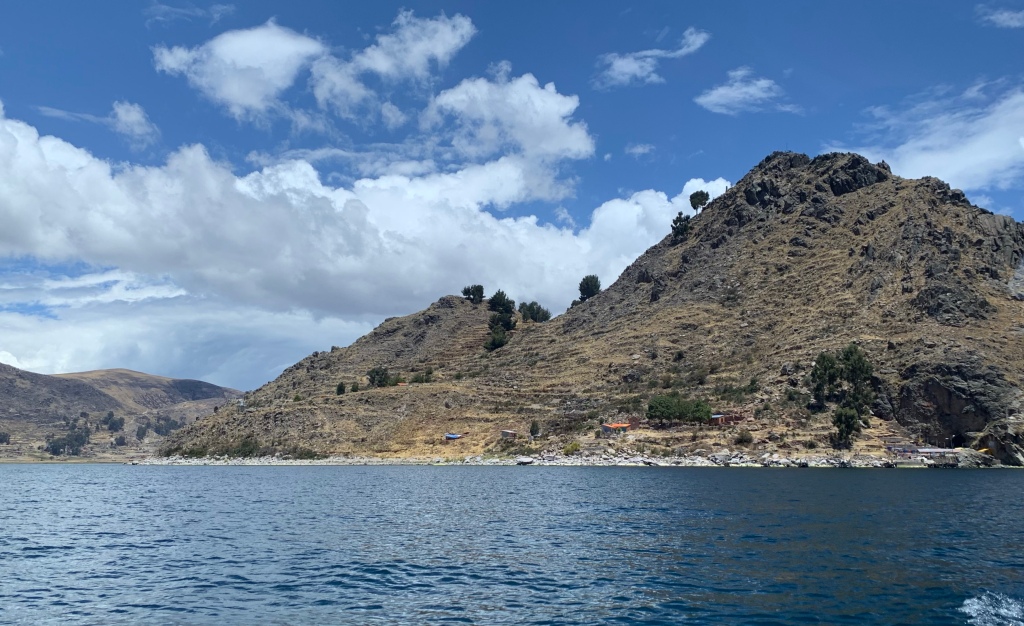
You can’t get it fresher than this!
She netted a trout from the pen and cooked it up!

There were also fries under the fish!
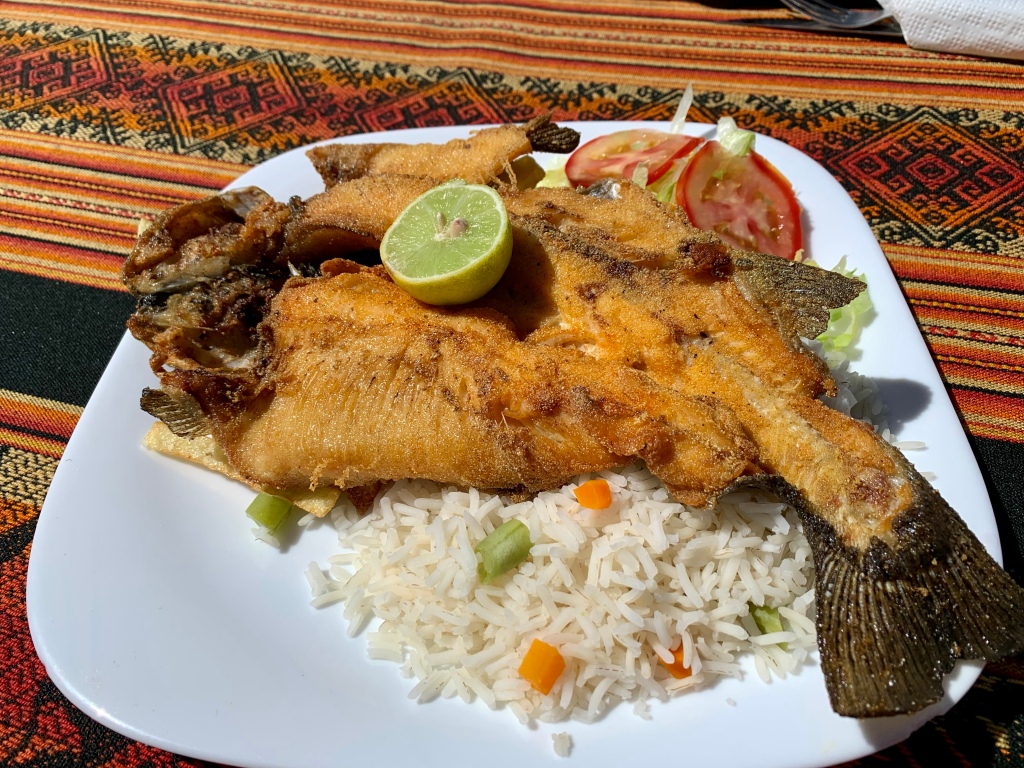
Trout was introduced into Lake Titicaca in 1941 by Canada. Before that they only had tiny fish.
We got back to Copacabana at 5 pm and our bus was waiting for us. It was about 30 minutes to the border to clear Bolivia and then enter Peru.
We had to carry our luggage through the Peruvian border, and then we loaded it onto a bigger Peru Hop bus and headed to Puno.
They had shuttles waiting for us to take us to our hotels. I slept well!
Christmas decorations!

The next morning was another trip out on Lake Titicaca.

First stop after 30 minutes, was Uros to visit man-made reed islands.



They also eat the reed – quite tasteless but healthy.

The reeds rot from underneath, and the islands quite a constant replacement on top. After 30 years they must build a new island to replace it.
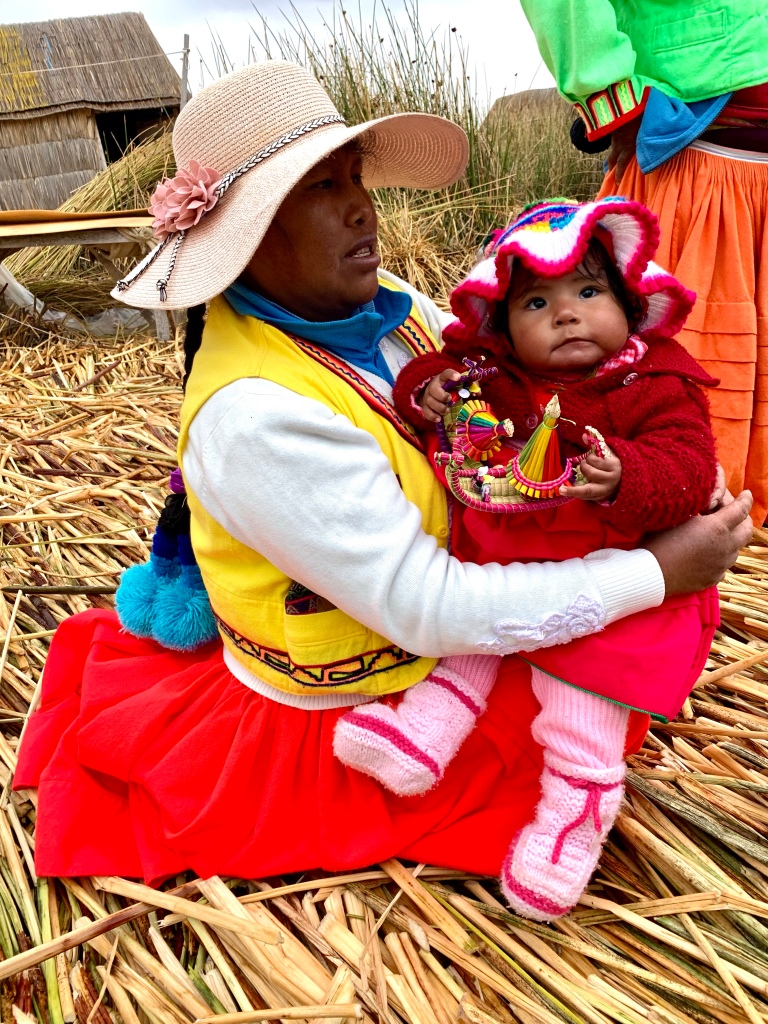
A ride on a traditional boat would be nice on a sunny day.

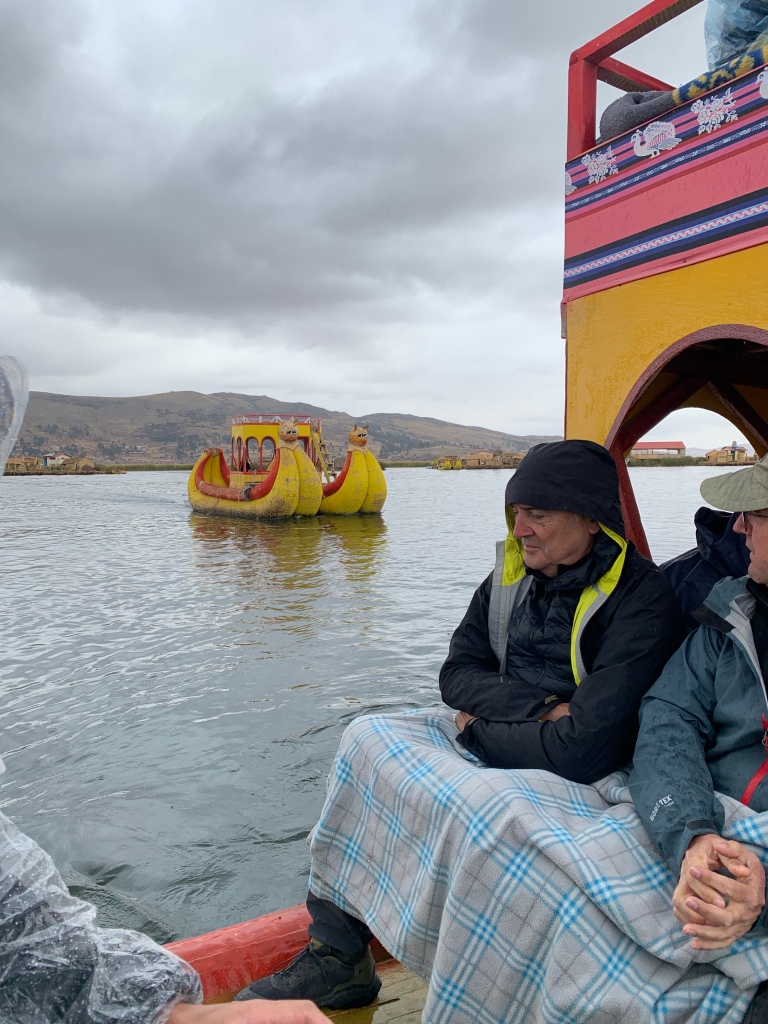
Then another 1.5 hours to Taquile Island.


More demonstrations and opportunities to shop. Though I did think things were locally made.




Very good lunch of quinoa soup and trout. And tea made with cocoa leaves which is supposed to help with altitude.
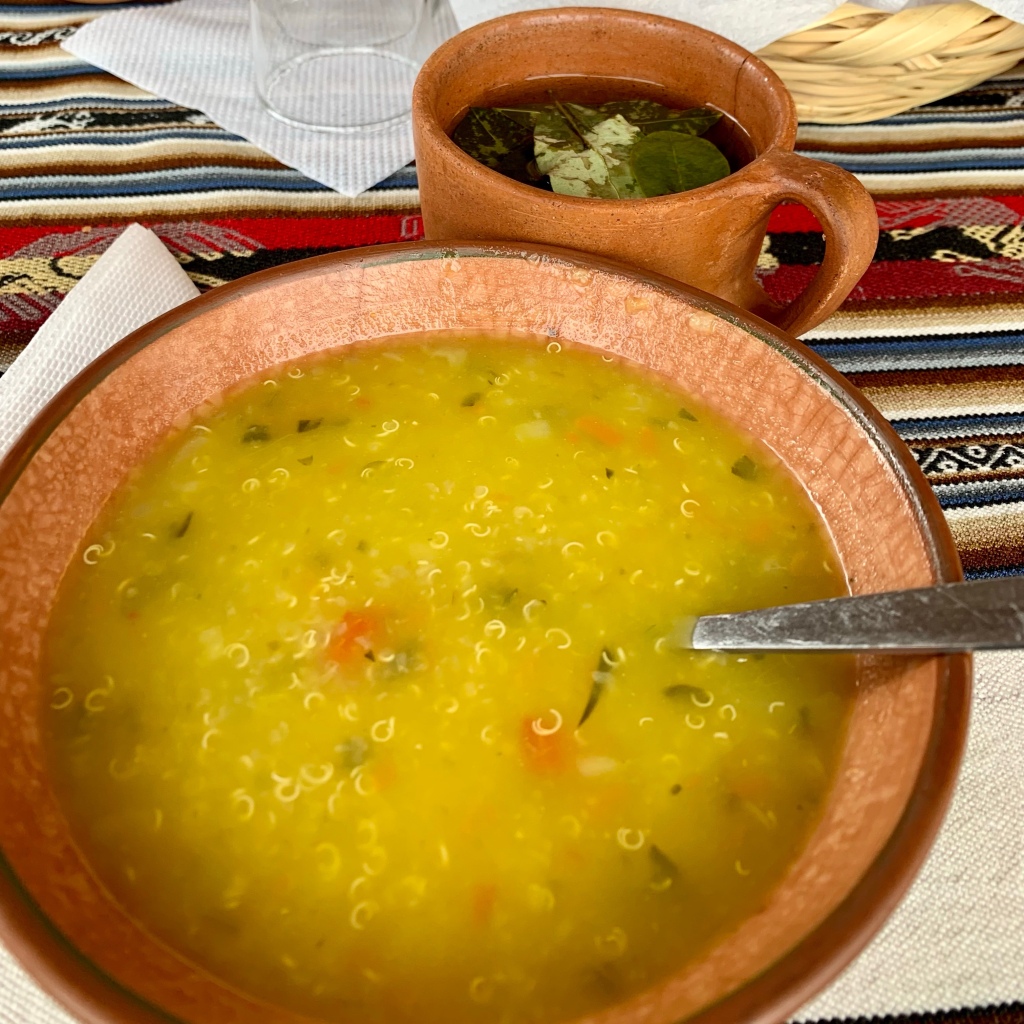

The next morning it was off to Cusco, Peru. It was a long day – 10 am to 8 pm. And again, shuttles and taxis waiting for us.
The centre of Cusco is the Plaza de Armas, surrounded by churches.

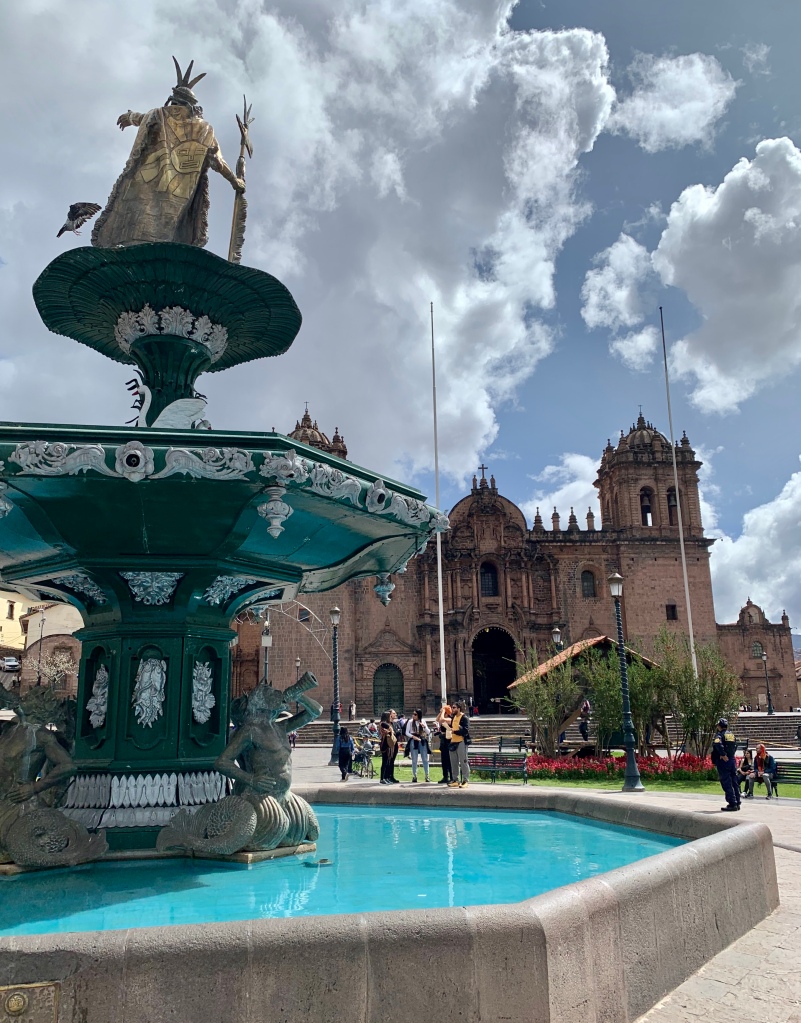
Cusco was the capital of the Inca civilization before the Spanish Conquistadors came in 1533. At that time it was one of the largest empires in the world.


Day of the Immaculate Conception was celebrated my first day out exploring Cusco.
I was in the right spot at the right time!




Arco de Santa Clara (1835) is on the way to the San Pedro market.


It’s a huge building full of shopping from food to flowers to fabrics.
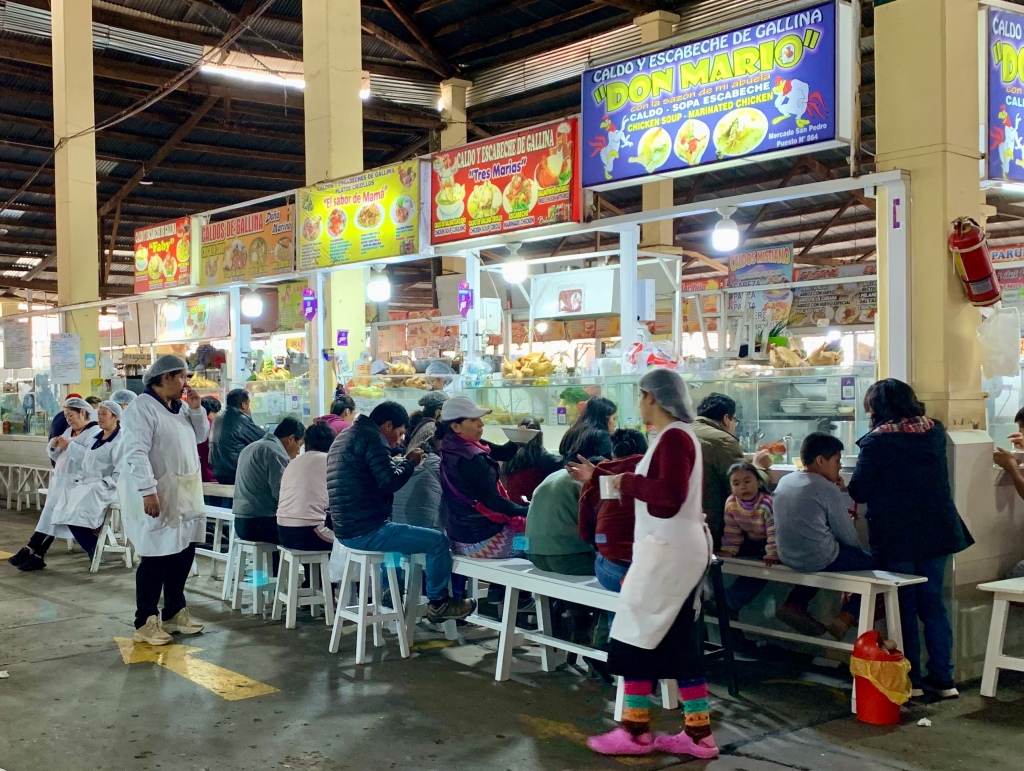







There must be a whole herd of llama in town looking for paid photos.

Qorikancha and Saint Dominic Priory
After taking Cusco in 1536, the Spanish demolished most of Qorikancha, melting down the gold plating and sculptures to be sent to Spain.
They then built a cathedral on the site, using the Inca stone foundations.
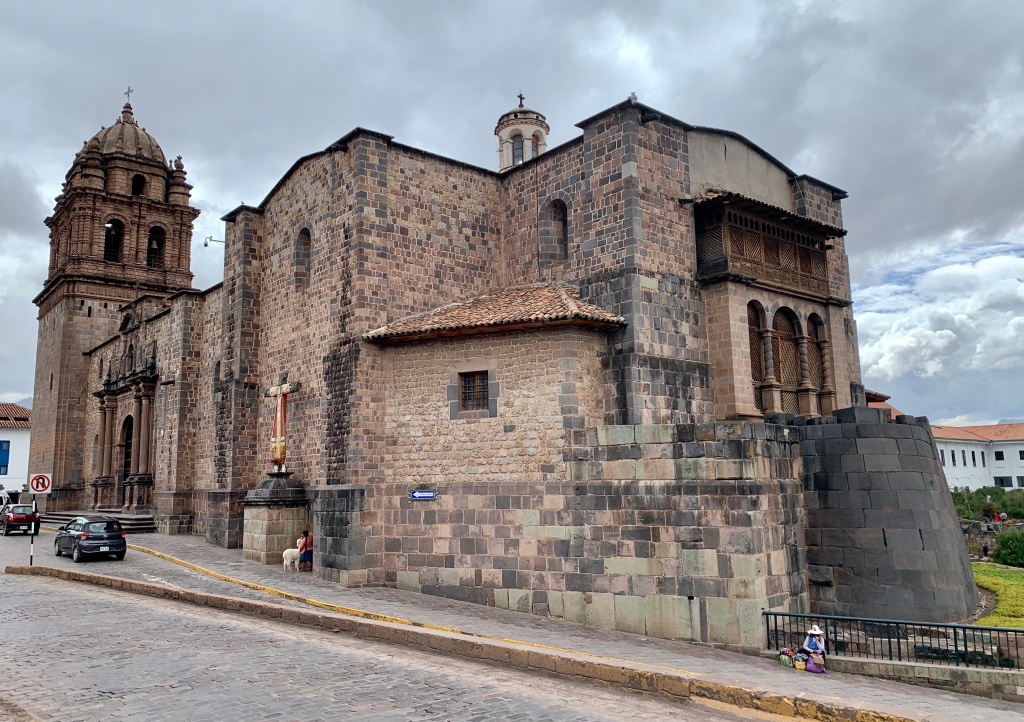
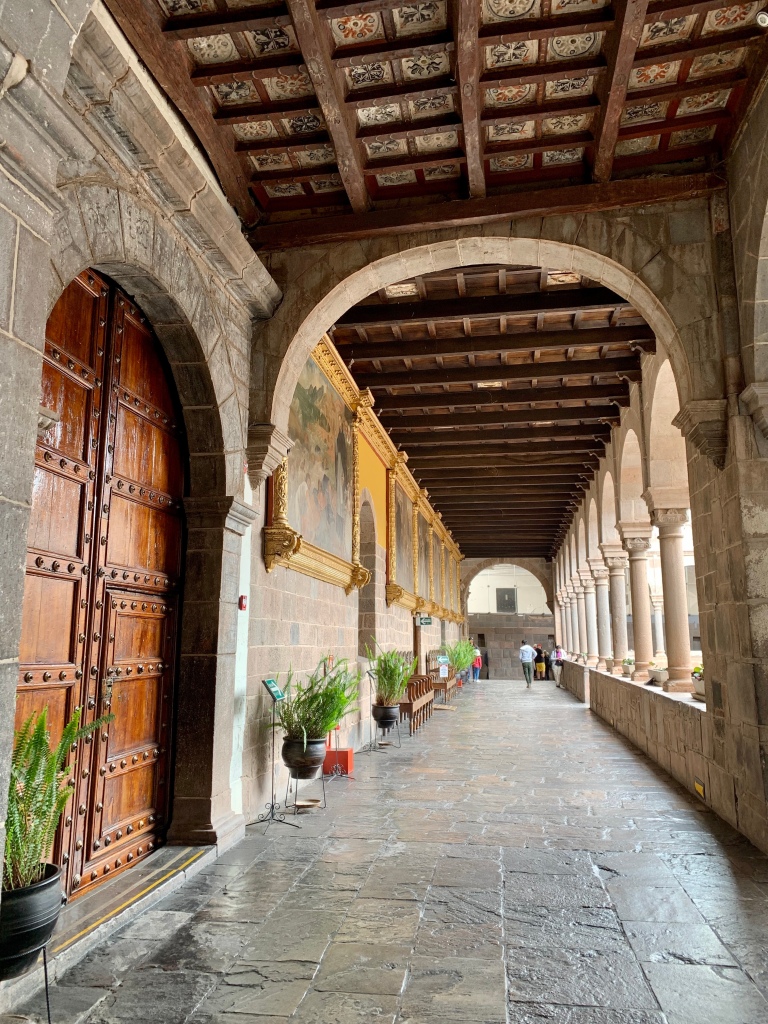


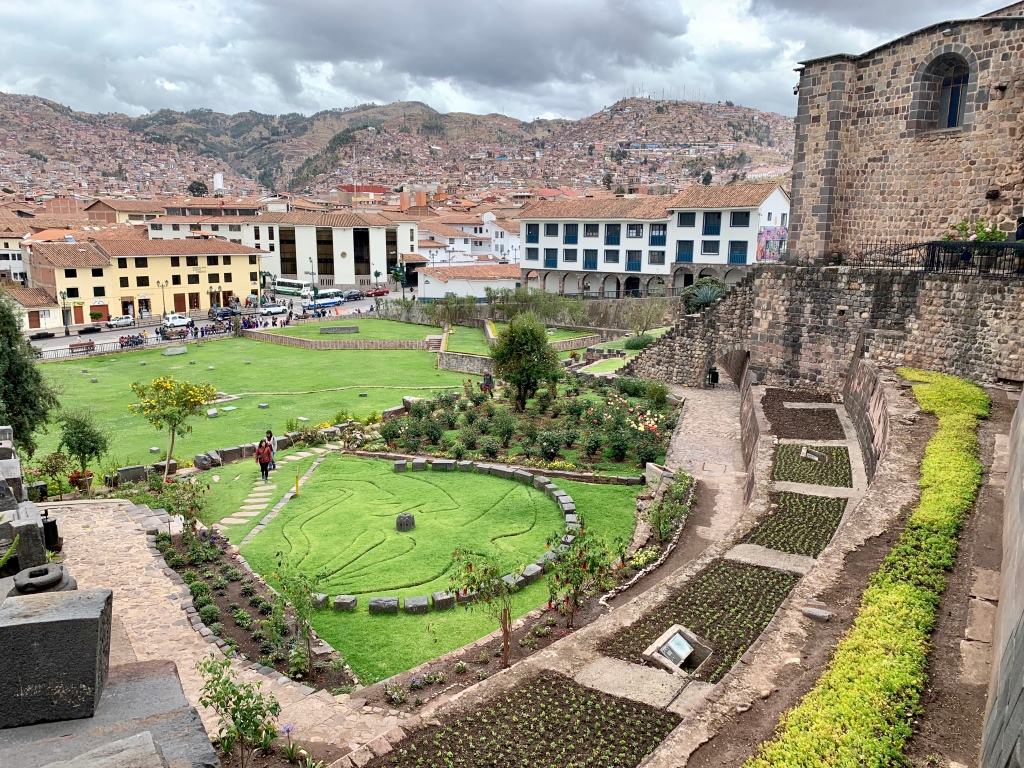

Young Quechua girl and her baby lamb

Saturday = weddings
I snuck into one church before and took a photo before the guard showed up. Usually they don’t allow photos but this place didn’t have a sign.

Then two more weddings with their bands.







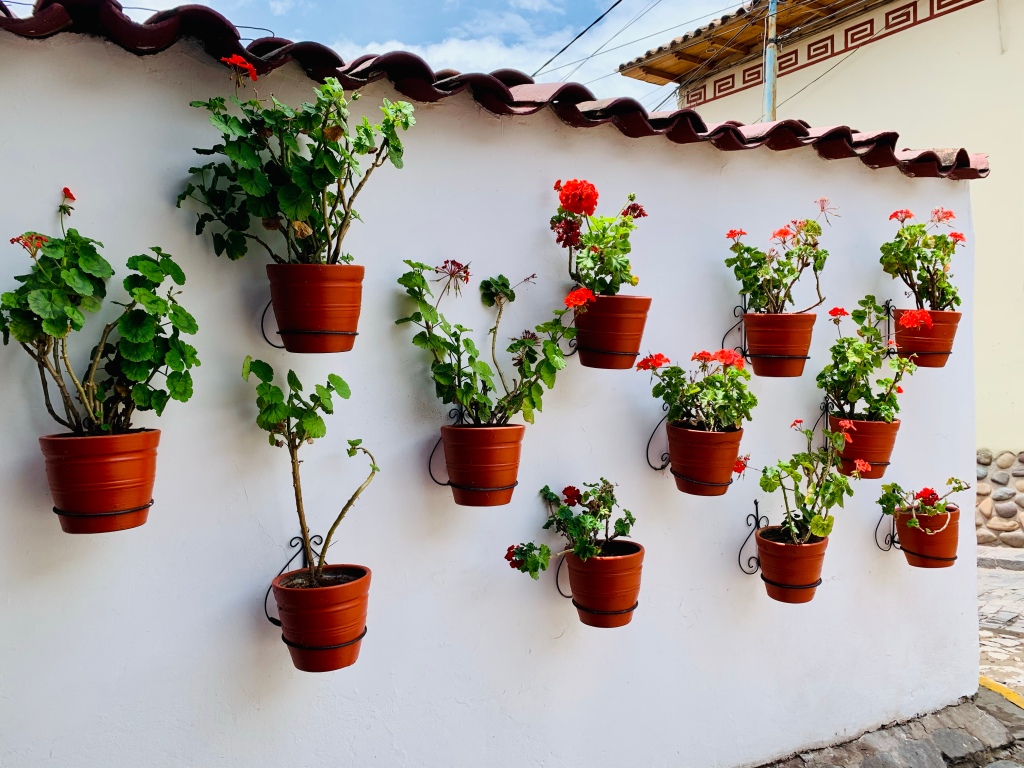

Monasterio Santa Catalina de Siena was part museum of monastic life, but they still have an active group of nuns as well.




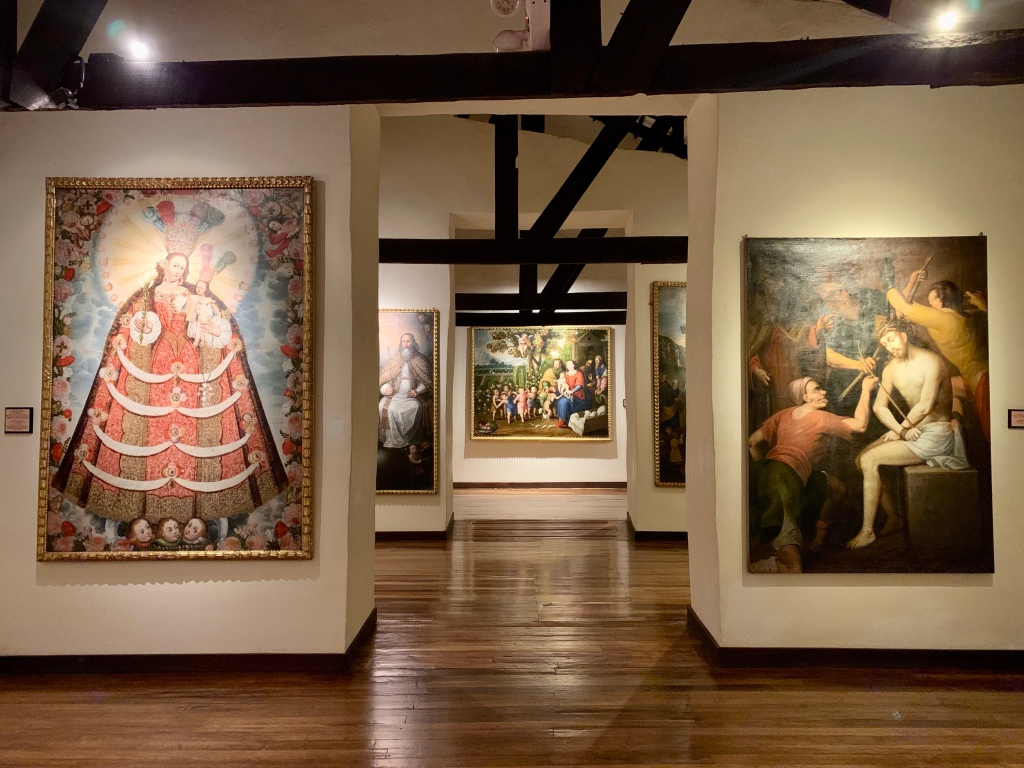

With all the young tourists, you can find tons of vegan restaurants. This one featured quinoa, a natural fit in Peru.


In my search for vegetables, I found myself in another vegan restaurant.
Complementary dab of hummus.

Then grilled oyster mushrooms, stuffed chili pepper, corn, potatoes, cusqueñian chili sauce, chimichurri, avocado and creole salad.

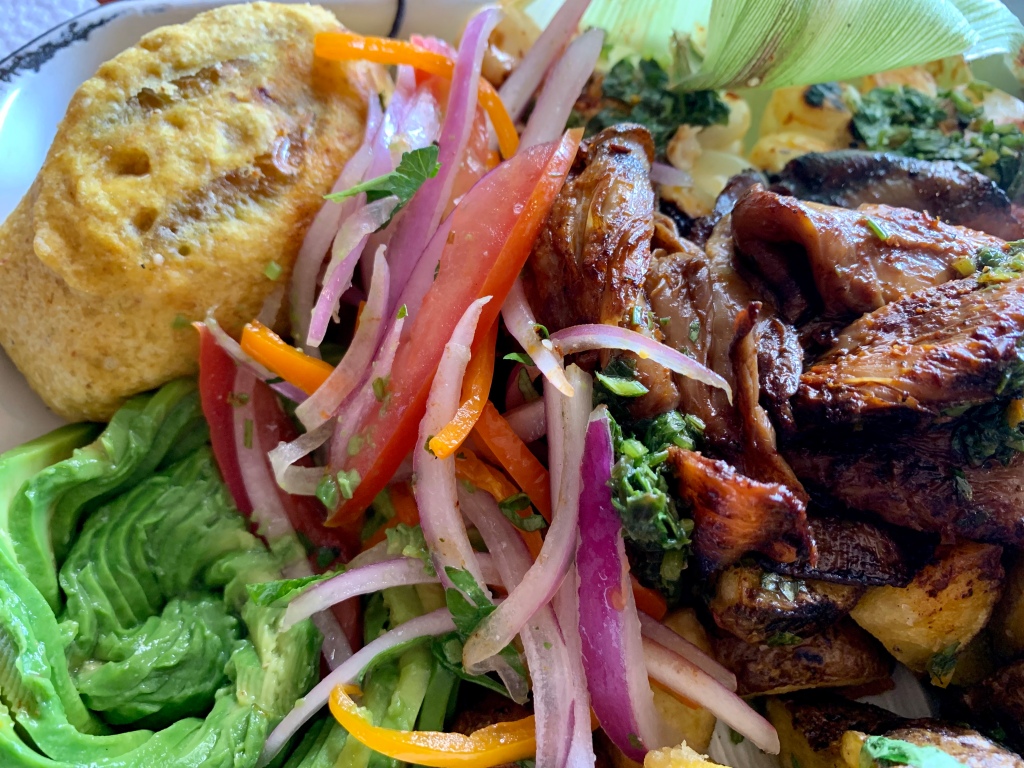
Curried vegetable korma because I was still craving vegetables!


Then the big trip to Machu Picchu!
1.5 hours by bus to Ollantaytambo and 1.5 hours by train to Aguas Caliente.
Waiting in Ollantaytambo and watching tourists buy matching ponchos!
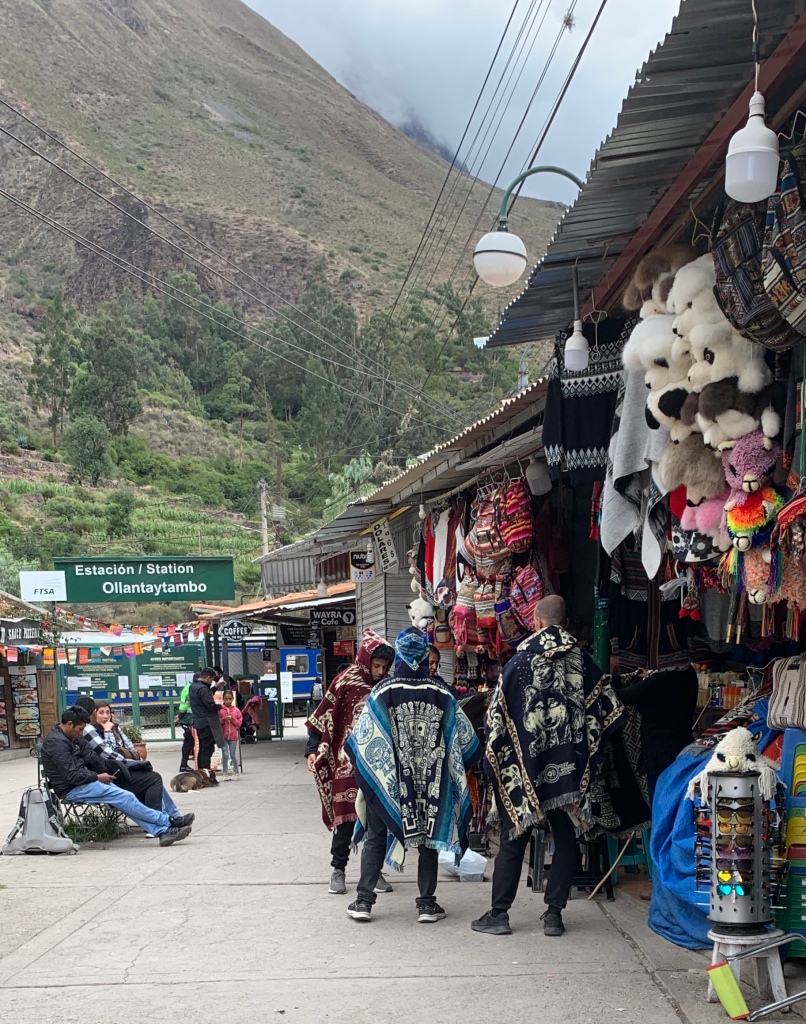

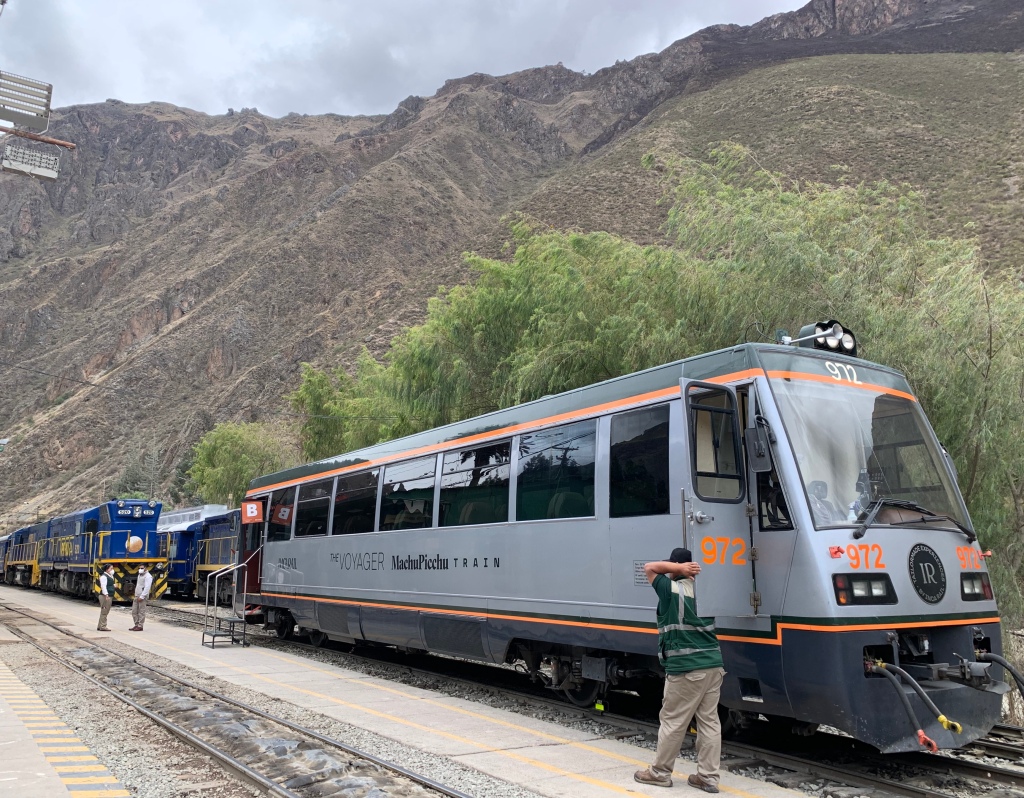

Aguas Caliente (hot water) is named for the hot springs upstream. It is also called Machu Picchu Pueblo (town).




Machu Picchu mountain rising up behind the market.
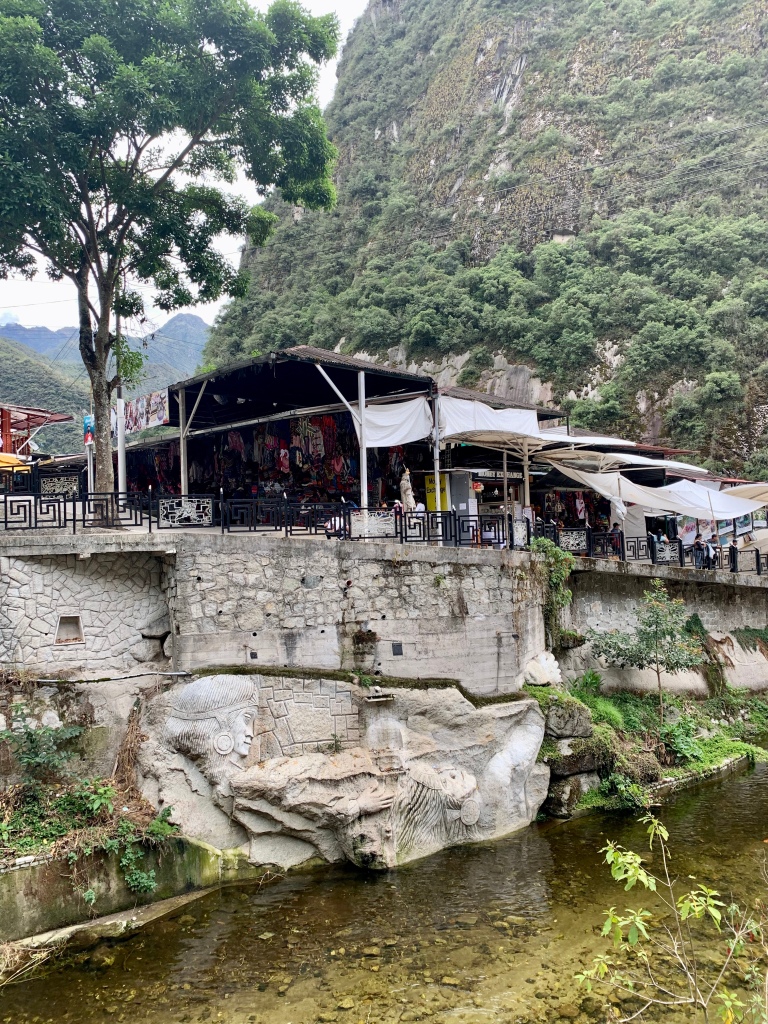

30 minute bus ride or 1.5 hour hike uphill. Best spent $37 CDN for a round trip.

It’s rainy season here but it eased off to a drizzle/mist. Very atmospheric!

We had a great guide who really made it special.

Terraces from Inca times have been all over Bolivia and Peru.

Clouds would move in and out in minutes.

Part of the Inca Trail.


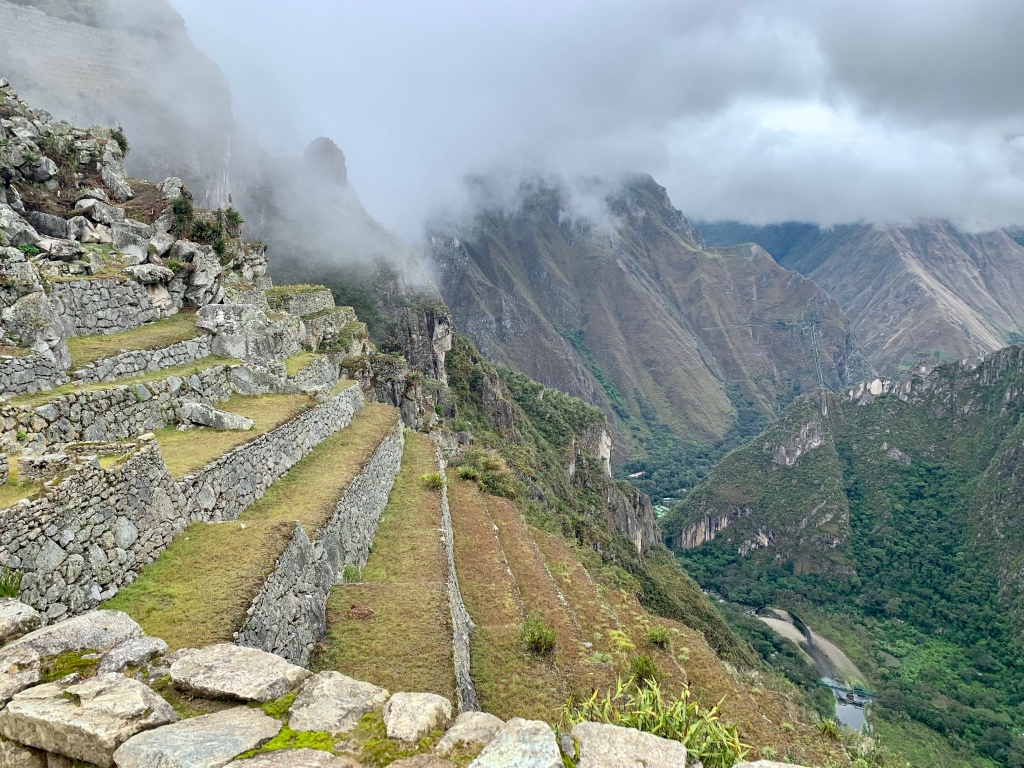

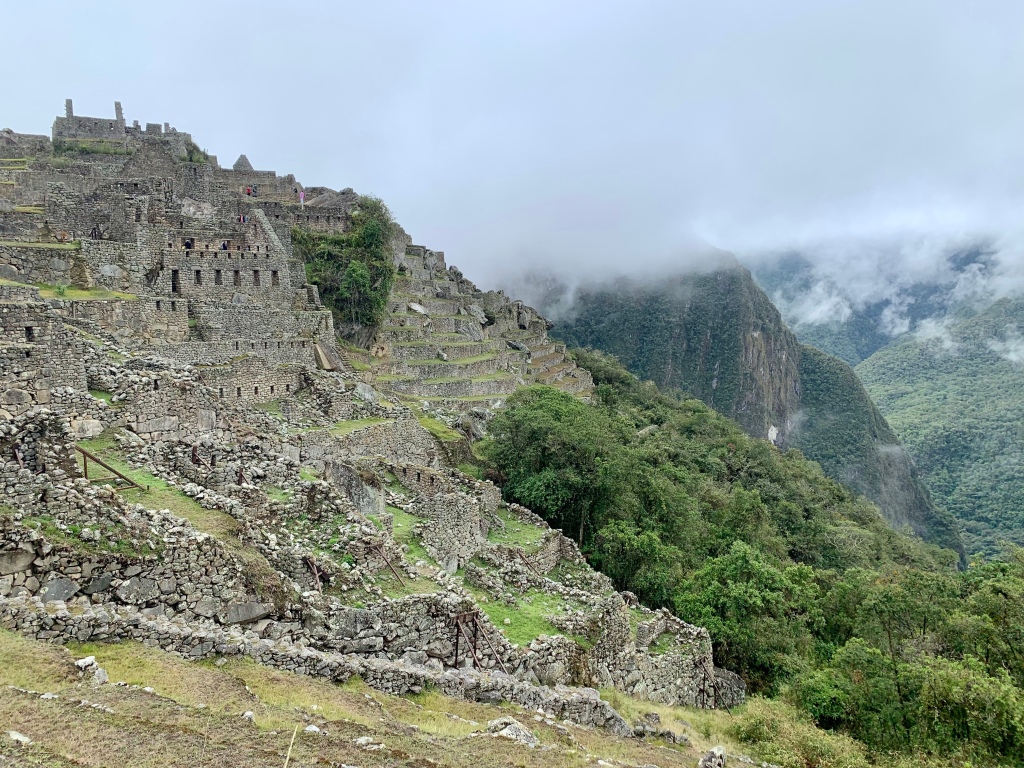

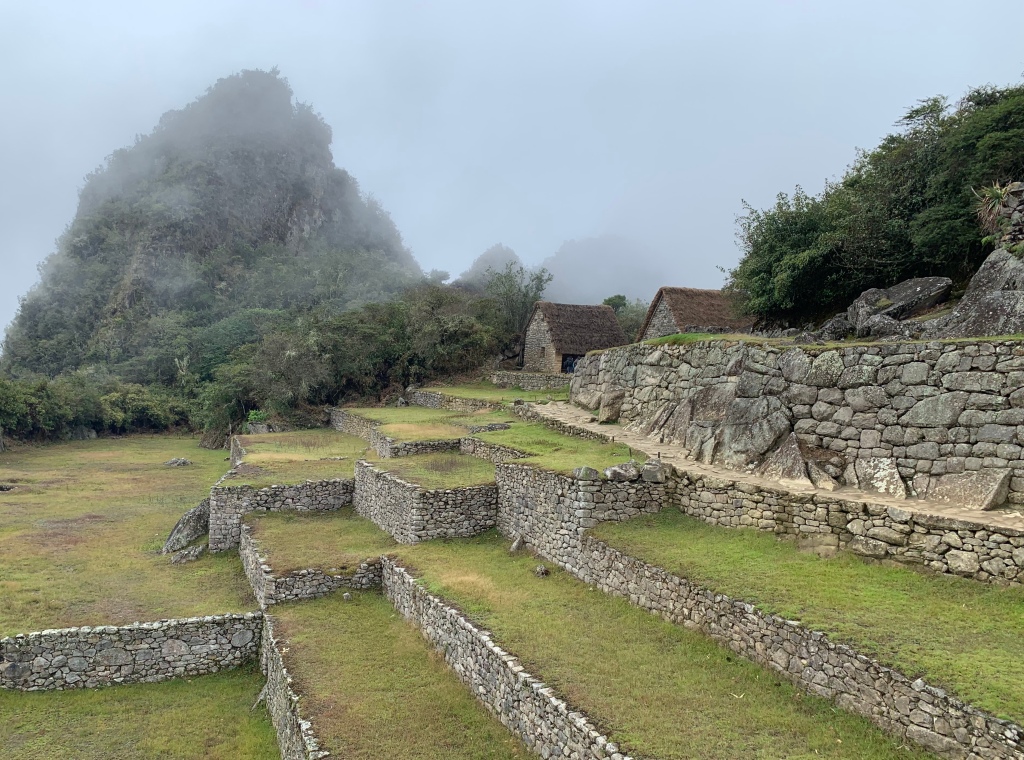

Founded in 1450, it was a centre of art, science and astronomy. It was abandoned after the Inca empire was conquered by the Spanish (mainly through disease).
What is most amazing is the Spanish never found Machu Picchu and is over 70% intact.
Then back on the bus/train/bus back to Cusco. Everyone looked pretty tired from all the steps!

Just as we were approaching the bus stop downtown, we ran into hundreds of protesters. I had to make way around them and up to my hotel.
This morning they were back.

I had an overnight bus to Arequipa scheduled to leave at 18:00 today as well as a flight tomorrow at 08:00.
The bus is cancelled because it’s stuck in roadblocks.
The airports in Cusco and Arequipa are closed.
But I’ve got a hotel, lots of restaurants, museums and places to walk avoiding Plaza de Armas.
And the bonus is I’ll avoid all the vendors there too!
Wish me luck I’m not stuck here too long. I’ve got places to be!


Wow Leslie! You are doing and seeing so many amazing things. Thanks for all the fabulous photos!
LikeLiked by 1 person
Thanks Joanne!
LikeLike
Looks like an amazing trip so far. Really enjoying all the pictures and information. Stay safe. Dolores
LikeLiked by 1 person
Thanks Dolores! It has been great! Still in Cusco but hopefully I’ll be able to leave in a day or two.
LikeLike
Love the llamas. Do they treat them as pets?
Machu Picchu sounded like a long day of travel and walking. I bet everyone slept well. I hope that things will be moving soon and that you are not stuck for long.
LikeLiked by 1 person
The llamas in town are just props because the women are trying to make money by having their picture taken. The ones at Machu Picchu were just tame!
LikeLike